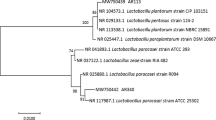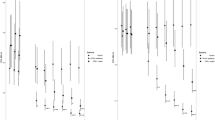Abstract
Dental caries remains a prevalent concern among children globally and is associated with Candida sp. Some researchers have suggested probiotic supplements as a possible solution for reducing dental caries. A study conducted in Tamil Nadu focused on collecting 80 dental caries samples from both males and females, obtained from two different locations. The samples underwent processing using the spread plate technique, followed by anticandidal activity assessments. Through ITS sequence analysis, candida strains were identified, including C. albicans (DDGRPO1, DDGRPO2). The study specifically investigated the ability of the probiotic bacterial strain Lb. fermentum cell-free filtrate to inhibit C. albicans. The research revealed that Lb. fermentum probiotics effectively inhibited the growth of C. albicans DDGRP01, displaying strong antifungal activity against Candida sp. (98%). While these results are promising, it is worth mentioning the increasing interest in exploring innovative alternatives to probiotic-based treatments. This avenue of research offers potential for a more comprehensive approach to addressing this issue. Notably, Lb. fermentum, derived from the human oral cavity, emerges as a significant postbiotic candidate for dental prophylaxis, indicating a hopeful direction for future studies.








Similar content being viewed by others
References
Chen X, Daliri EBM, Chelliah R, Oh DH (2020) Isolation and identification of potentially pathogenic microorganisms associated with dental caries in human teeth biofilms. Microorganisms 8:1596. https://doi.org/10.3390/microorganisms8101596
Youssefi MA, Afroughi S (2020) Prevalence and associated factors of dental caries in primary schoolchildren: an Iranian setting. Int J Dent. https://doi.org/10.1155/2020/8731486
Thomas A, Mhambrey S, Chokshi K, Chokshi A, Jana S, Thakur S, Jose D, Bajpai G (2016) Association of Oral Candida albicans with severe early childhood caries—a pilot study. J Clin Diagn Res JCDR 10:ZC109–ZC112. https://doi.org/10.7860/JCDR/2016/19387.8357
Alshaya HK, Alogla SA, Alshammari KSG, Nazareno CL, AlJameel MAS, Hossain A (2016) Isolation and characterisation of bacterial species from patients with dental caries and caries-free subjects. J Pharm Biomed Sci 6:15 (333–337)
Alghamdi S (2022) Isolation and identification of the oral bacteria and their characterization for bacteriocin production in the oral cavity. Saudi J Biol Sci 29:318–323. https://doi.org/10.1016/j.sjbs.2021.08.096
Marinho SA, Teixeira AB, Santos OS, Cazanova RF, Ferreira CAS, Cherubini K, Oliveira SDD (2010) Identification of Candida spp. by phenotypic tests and PCR. Braz J Microbiol 41:286–294
Tafere Y, Chanie S, Dessie T, Gedamu H (2018) Assessment of prevalence of dental caries and the associated factors among patients attending dental clinic in Debre Tabor general hospital: a hospital-based cross-sectional study. BMC Oral Health 18:1–7. https://doi.org/10.1186/s12903-018-0581-8
Abdel-Nasser M, Abdel-Maksoud G, Eid AM, Hassan SE-D, Abdel-Nasser A, Alharbi M, Elkelish A, Fouda A (2023) Antifungal activity of cell-free filtrate of probiotic bacteria Lactobacillus rhamnosus ATCC-7469 against fungal strains isolated from a historical manuscript. Microorganisms 11:1104. https://doi.org/10.3390/microorganisms11051104
Divyashree S, Shruthi B, Vanitha PR, Sreenivasa MY (2023) Probiotics and their postbiotics for the control of opportunistic fungal pathogens: a review. Biotechnol Rep. https://doi.org/10.1016/j.btre.2023.e00800
Dhanasekaran D, Vinothini K, Latha S, Thajuddin N, Panneerselvam A (2014) Human dental biofilm: screening, characterization, in vitro biofilm formation and antifungal resistance of Candida spp. Saudi J Dent Res 5:55–70. https://doi.org/10.1016/j.ksujds.2013.10.001
Ghelardi EMILIA, Pichierri G, Castagna B, Barnini S, Tavanti ARIANNA, Campa MARIO (2008) Efficacy of Chromogenic Candida Agar for isolation and presumptive identification of pathogenic yeast species. Clin Microbiol Infect 14:141–147. https://doi.org/10.1111/j.1469-0691.2007.01872.x
Shi Y, Zhu Y, Fan S, Liu X, Liang Y, Shan Y (2020) Molecular identification and antifungal susceptibility profile of yeast from vulvovaginal candidiasis. BMC Infect Dis 20:1–10. https://doi.org/10.1186/s12879-021-06601-x
Vijayakumar R, Giri S, Kindo AJ (2012) Molecular species identification of Candida from blood samples of intensive care unit patients by polymerase chain reaction–restricted fragment length polymorphism. J Lab Phys 4:001–004
Pinto-Almazán R, Frías-De-León MG, Fuentes-Venado CE, Arenas R, González-Gutiérrez L, Chávez-Gutiérrez E, Torres-Paez OU, Martínez-Herrera E (2022) Frequency of Candida spp. in the oral cavity of asymptomatic preschool Mexican children and its association with nutritional status. Children 9:1510. https://doi.org/10.3390/children9101510
Cordeiro RA, Teixeira CE, Brilhante RS, Castelo-Branco DS, Paiva MA, Giffoni Leite JJ, Lima DT, Monteiro AJ, Sidrim JJ, Rocha MF (2013) Minimum inhibitory concentrations of amphotericin B, azoles and caspofungin against Candida species are reduced by farnesol. Med Mycol 51:53–59. https://doi.org/10.3109/13693786.2012.692489
Vanitha PR, Somashekaraiah R, Divyashree S, Pan I, Sreenivasa MY (2023) Antifungal activity of probiotic strain Lactiplantibacillus plantarum MYSN7 against Trichophyton tonsurans. Front Microbiol 14:1192449. https://doi.org/10.3389/fmicb.2023.1192449
Bagramian RA, Garcia-Godoy F, Volpe AR (2009) The global increase in dental caries. A pending public health crisis. Am J dent 22:3–8
Saeed AS, Saadullah AA (2019) Isolation, identification and antifungal susceptibility testing of Candida species from Dermatologic Specimens in Duhok Province. Zanco J Pure Appl Sci 31:1–8
Zarei Mahmoudabadi A, Drucker B, Mandall N, O’Brien K, Theaker E (2000) Isolation and identification of Candida species from the oral cavity using CHROMagar Candida. Iran Biomed J 4:57–61
Aslani N, Abastabar M, Hedayati MT, Shokohi T, Aghili SR, Diba K, Hosseini T, Bahrami B, Ebrahimpour A, Salehi M, Sarvtin MT, Moghaddam MV (2018) Molecular identification and antifungal susceptibility testing of Candida species isolated from dental plaques. J Mycol Méd 28(3):433–436. https://doi.org/10.1016/j.mycmed.2018.05.006
Ellepola AN, Khan ZU, Joseph B, Chandy R, Philip L (2011) Prevalence of Candida dubliniensis among oral Candida isolates in patients attending the Kuwait University Dental Clinic. Med Princ Pract 20:271–276. https://doi.org/10.1159/000323440
Arjuna NBE, Zia K, Bobby J, Rachel C, Leeba P (2011) Prevalence of Candida dubliniensis among oral Candida isolates in patients attending the Kuwait University Dental Clinic. Med Princ Pract 20:271–276
Vazquez-Munoz R, Dongari-Bagtzoglou A (2021) Anticandidal activities by lactobacillus species: an update on mechanisms of action. Front Oral Health 2:689382. https://doi.org/10.3389/froh.2021.689382
Abouloifa H, Gaamouche S, Rokni Y, Hasnaoui I, Bellaouchi R, Ghabbour N, Karboune S, Brasca M, D’Hallewin G, Salah RB, Saalaoui E, Asehraou A (2021) Antifungal activity of probiotic Lactobacillus strains isolated from natural fermented green olives and their application as food bio-preservative. Biol Control 152:104450. https://doi.org/10.1016/j.biocontrol.2020.104450
Acknowledgements
We express our gratitude to the Department of Science and Technology (DST) for their funding support to our research facility through the Rashtriya Uchchatar Shiksha Abhiyan (RUSA) 2.0—Biological Sciences (TN RUSA: 311/RUSA (2.0)/2018, dated 02/12/2020) phase of the DST Promotion of University Research and Scientific Excellence (PURSE) scheme.
Author information
Authors and Affiliations
Corresponding author
Additional information
Publisher's Note
Springer Nature remains neutral with regard to jurisdictional claims in published maps and institutional affiliations.
Supplementary Information
Below is the link to the electronic supplementary material.
Rights and permissions
Springer Nature or its licensor (e.g. a society or other partner) holds exclusive rights to this article under a publishing agreement with the author(s) or other rightsholder(s); author self-archiving of the accepted manuscript version of this article is solely governed by the terms of such publishing agreement and applicable law.
About this article
Cite this article
Radhamanalan, G., Dharumadurai, D. Anticandidal Efficacy of Oral Probiont Limosilactobacillus fermentum Against Dental Caries Pathogens in Children, Tamil Nadu, India. Indian J Microbiol 64, 244–253 (2024). https://doi.org/10.1007/s12088-023-01175-5
Received:
Accepted:
Published:
Issue Date:
DOI: https://doi.org/10.1007/s12088-023-01175-5




